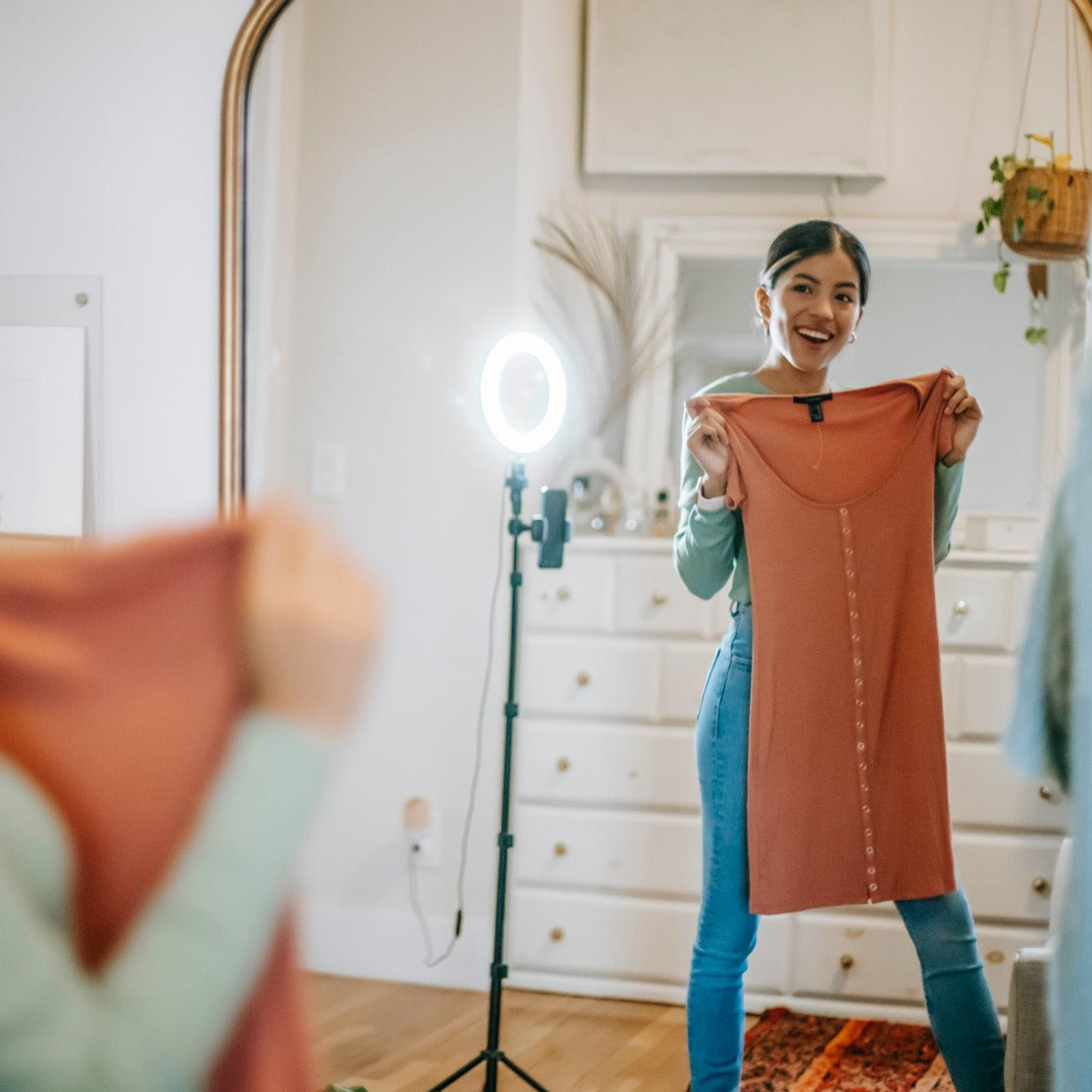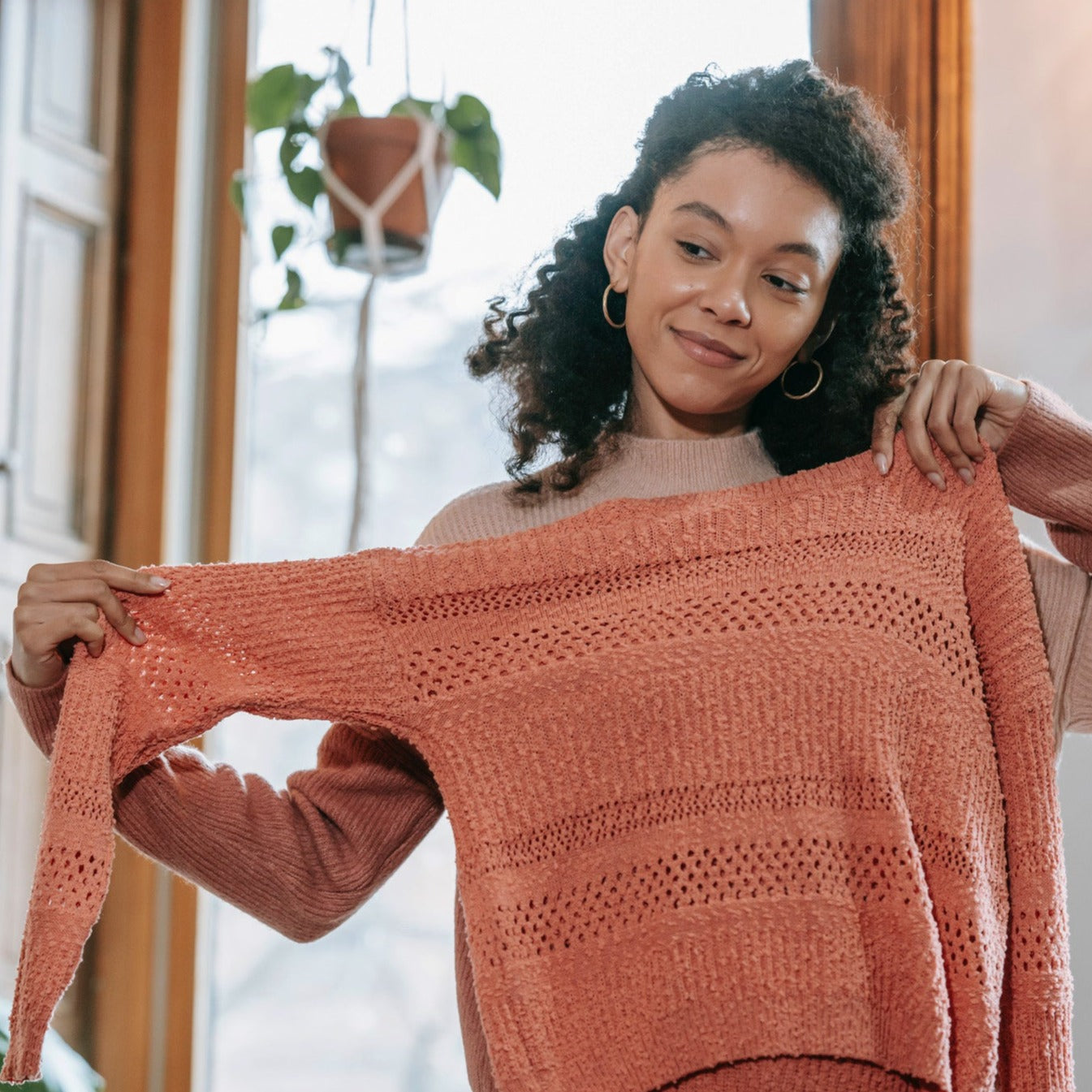In the ever-evolving world of fashion, a new and unconventional trend has emerged, reshaping the industry as we know it. Imagine a world where fashion icons never age, sleep, or eat welcome to the realm of virtual influencers. These computer-generated personas have become the new darlings of the fashion world, revolutionizing digital marketing and brand-audience interaction. From higher engagement rates to the ability to present fashion collections in refreshing ways, virtual influencers are capturing the attention of fashion brands and enthusiasts alike.
Virtual influencers are digital personas created through advanced computer graphics, animation, and artificial intelligence technologies. Unlike human influencers, these virtual entities are entirely fictional, existing solely in the digital realm. In the fashion industry, virtual influencers serve as brand ambassadors, trendsetters, and marketing tools. Their ability to engage audiences and convey a curated sense of style has propelled them into the spotlight, making them key players in shaping consumer perceptions and influencing purchasing decisions.
The Genesis of Virtual Influencers
The concept of virtual influencers can be traced back to the intersection of technology, entertainment, and marketing. The roots of this phenomenon lie in the evolution of computer-generated imagery (CGI), artificial intelligence (AI), and the growing influence of social media. While the idea of digital characters engaging with audiences predates the current era, the convergence of these technologies in the 21st century laid the foundation for the rise of virtual influencers. Early Examples and Milestones in the Development of Virtual Influencers
2006 - Second Life Avatars: The early 2000s saw the emergence of virtual worlds like Second Life, where users could create and customize digital avatars. While not explicitly influencers, these avatars laid the groundwork for digital self-expression and interaction within virtual spaces.
2016 - Lil Miquela: Often credited as the first virtual influencer, Lil Miquela debuted on Instagram in 2016. Created by the company Brud, Miquela blended seamlessly with real influencers, garnering attention and sparking discussions about the authenticity of online personas.
2018 - Shudu Gram: Shudu Gram, created by Cameron-James Wilson, gained recognition as a digital supermodel. Her hyper-realistic appearance and collaborations with real-world fashion brands marked a significant milestone, showcasing the potential for virtual models to make a tangible impact in the fashion industry.
2019 - Noonoouri: Noonoouri, a CGI influencer created by Joerg Zuber, became a notable figure in the fashion world. With her cartoon-like aesthetic, Noonoouri collaborated with luxury brands, attended fashion events, and showcased the versatility of virtual influencers in brand promotion.
Impact on Traditional Influencer Marketing
A. Virtual Influencers vs. Human Influencers: A Comparative Analysis
-
Authenticity and Relatability:
- Human Influencers: Human influencers often leverage their authenticity and relatability to connect with audiences. Followers appreciate their real-life experiences and relatable content.
- Virtual Influencers: While lacking in real-life experiences, virtual influencers offer a different kind of authenticity through consistent branding and controlled messaging. Their appeal lies in the curated nature of their digital personas.
-
Creative Freedom and Aesthetics:
- Human Influencers: Human influencers are bound by physical appearances, trends, and societal norms. Their content is limited to their personal style and preferences.
- Virtual Influencers: Virtual influencers provide brands with unparalleled creative freedom. Designers can experiment with unique aesthetics, pushing the boundaries of fashion without being constrained by real-world limitations.
-
Consistency and Availability:
- Human Influencers: Human influencers may face challenges in maintaining a consistent online presence due to personal commitments, fatigue, or unforeseen circumstances.
- Virtual Influencers: Virtual influencers are available 24/7, ensuring consistent engagement with audiences. This reliability makes them attractive for brands seeking continuous visibility.
B. Challenges and Opportunities for Brands Collaborating with Virtual Influencers
-
Challenges:
- Skepticism and Authenticity Concerns: Some consumers may be skeptical about the authenticity of virtual influencers, leading to potential trust issues.
- Technical and Creative Costs: The creation and maintenance of realistic virtual influencers can involve significant technical and creative expenses.
- Navigating the Uncanny Valley: Striking the right balance between realism and avoiding the "uncanny valley" effect where virtual characters become unsettlingly close to real humans poses a creative challenge.
-
Opportunities:
- Unlimited Creative Potential: Virtual influencers provide brands with a canvas for unlimited creativity, allowing them to craft unique and memorable campaigns.
- Data-Driven Personalization: Brands can leverage AI to personalize content based on user data, creating more targeted and effective marketing strategies.
- Risk Mitigation: Virtual influencers offer brands a level of control over their image, reducing the risk of controversies associated with human influencers.
C. Shifting Consumer Perceptions and Expectations in Influencer Marketing
-
Redefining Beauty Standards:
- Inclusivity: Virtual influencers challenge traditional beauty standards by embodying diverse and inclusive representations, resonating with a broader audience.
- Breaking Stereotypes: Virtual influencers can help break stereotypes associated with physical appearance, showcasing a more expansive view of beauty.
-
Desire for Authenticity:
- Balancing Act: Consumers still value authenticity in influencer marketing. Brands need to strike a balance between the curated nature of virtual influencers and the desire for genuine connections.
-
Evolving Engagement Preferences:
- Interactive Experiences: Virtual influencers excel in providing interactive and immersive experiences, aligning with the evolving preferences of consumers seeking more engaging content.
- Cross-Platform Presence: Consumers expect influencers, both virtual and human, to have a strong and cohesive presence across multiple digital platforms.
Fashion Brands Embracing Virtual Influencers
A. Examples of Fashion Brands Incorporating Virtual Influencers into Their Campaigns
-
Balmain x Shudu:
- In 2018, luxury fashion house Balmain collaborated with Shudu Gram, a virtual model. Shudu featured prominently in Balmain's Bbox bag campaign, showcasing the potential of virtual influencers in high-end fashion.
-
Dior x Noonoouri:
- Dior partnered with Noonoouri, a CGI influencer, to promote their products on social media. Noonoouri attended Dior fashion shows, creating a seamless integration of the virtual influencer into the real-world events.
-
Calvin Klein x Lil Miquela:
- Lil Miquela collaborated with Calvin Klein for their #MyCalvins campaign. The virtual influencer's participation in the campaign generated significant online buzz and demonstrated the brand's innovative approach to marketing.
-
Prada x Lil Miquela:
- Lil Miquela also collaborated with Prada, further solidifying her presence in the fashion industry. The collaboration involved Miquela wearing Prada clothing and accessories, showcasing the ability of virtual influencers to promote high-end fashion brands.
B. Success Stories and Lessons Learned from Brand-Virtual Influencer Collaborations
-
Increased Engagement and Brand Visibility:
- Collaborations with virtual influencers have led to increased engagement on social media platforms. Brands leveraging virtual influencers often experience higher visibility, as audiences are intrigued by the novelty of these digital personas.
-
Innovative Marketing Strategies:
- Fashion brands have learned to adopt innovative marketing strategies by incorporating virtual influencers. These collaborations allow brands to showcase their products in unique and imaginative ways, setting them apart from competitors.
-
Global Reach and Cultural Adaptability:
- Virtual influencers, being digital entities, offer brands the opportunity to reach global audiences. Their adaptability to different cultural contexts allows brands to connect with diverse markets effectively.
-
Controlled Brand Image:
- Brands appreciate the controlled image that comes with virtual influencers. The ability to shape and maintain the persona of a virtual influencer helps mitigate the risks associated with the unpredictability of human influencers.
C. Potential Risks and Criticisms Associated with Virtual Influencers in Fashion
-
Authenticity Concerns:
- Some critics argue that virtual influencers lack the authenticity that human influencers bring to the table. Audiences may question the sincerity of brand messages conveyed through digital avatars.
-
Technical and Creative Costs:
- The creation and maintenance of realistic virtual influencers can involve substantial technical and creative expenses. Brands need to carefully assess the return on investment, especially when considering the cost of CGI development.
-
Societal Impact and Unrealistic Beauty Standards:
- There are concerns that virtual influencers, with their flawless appearances, might contribute to unrealistic beauty standards. Critics argue that these digital personas may further perpetuate ideals that are unattainable in the real world.
-
Public Perception and Trust:
- Building trust with audiences can be challenging for brands using virtual influencers. Skepticism about the genuineness of digital personas may impact consumer trust, potentially leading to backlash or disengagement.
Technological Advancements Driving Virtual Influencers
A. Artificial Intelligence and Its Role in Creating Realistic Virtual Influencers
-
Facial Recognition and Animation:
- Artificial intelligence (AI) plays a crucial role in creating realistic virtual influencers by enhancing facial recognition and animation technologies. These advancements enable virtual influencers to express emotions, replicate nuanced facial movements, and convey a sense of authenticity.
-
Natural Language Processing (NLP):
- NLP algorithms empower virtual influencers to engage in more natural and dynamic conversations with their audience. This capability enhances the interactive nature of virtual influencers, allowing them to respond intelligently to comments and messages.
-
Machine Learning for Personalization:
- Machine learning algorithms enable virtual influencers to analyze user data and preferences, tailoring content to specific audiences. This level of personalization enhances the user experience and strengthens the bond between virtual influencers and their followers.
B. Augmented Reality and Virtual Try-On Experiences
-
Virtual Fashion Showcases:
- Augmented reality (AR) is transforming the way virtual influencers showcase fashion products. Brands can utilize AR to create virtual fashion shows where users can experience clothing and accessories in a dynamic and immersive manner, enhancing the online shopping experience.
-
Virtual Try-Ons:
- Virtual influencers are increasingly becoming part of virtual try-on experiences. With AR technology, users can virtually try on clothing and accessories worn by their favorite virtual influencers, providing a more interactive and engaging approach to online shopping.
-
Enhanced Brand Collaborations:
- AR enables virtual influencers to seamlessly integrate with the physical world, opening up new possibilities for brand collaborations. Virtual influencers can appear in real-world spaces through AR, participating in events, product launches, and interactive campaigns.
C. The Future of Technology in Shaping the Evolution of Virtual Influencers
-
Improved Realism Through Deep Learning:
- The future of virtual influencers will likely see even greater realism through advancements in deep learning. Deep learning algorithms can refine the details of virtual influencers' appearances, making them more indistinguishable from real humans.
-
Emotional Intelligence and Empathy:
- Future virtual influencers may possess enhanced emotional intelligence, allowing them to express a broader range of emotions and empathize with their audience. This development could further strengthen the emotional connection between virtual influencers and followers.
-
Holographic Integration:
- Holographic technology may play a role in the evolution of virtual influencers. The integration of holograms could enable virtual influencers to appear in physical spaces, creating unique and memorable interactions for audiences.
-
Interconnected Virtual Worlds:
- The future may bring about interconnected virtual worlds where virtual influencers collaborate with each other or with real influencers in shared digital spaces. This collaborative approach could lead to innovative storytelling and marketing strategies.
-
Blockchain for Authenticity and Ownership:
- Blockchain technology could be employed to enhance the authenticity and ownership of virtual influencers. Implementing blockchain in the creation and management of virtual influencers could provide transparency and traceability in their development and usage.
As technology continues to advance, the evolution of virtual influencers is poised to be dynamic and multifaceted. The integration of AI, AR, and other emerging technologies will likely redefine the capabilities of virtual influencers, offering new opportunities for brands to engage with audiences in innovative ways. The future holds the promise of increasingly sophisticated and interactive virtual influencer experiences, shaping the landscape of digital marketing and brand promotion.
Trend Reshaping
The advent of virtual influencers represents a paradigm shift in the fashion industry's approach to marketing and brand representation. As technology continues to advance, these digital personas offer fashion brands unprecedented opportunities for creative expression, global outreach, and data-driven engagement. The intersection of AI, AR, and blockchain technologies is propelling virtual influencers into the future, where they are expected to play an increasingly central role in shaping consumer perceptions and influencing the evolution of fashion marketing.
You may also be interested in: 15 Best Online Boutiques for Women lookingGLASS Lifestyle
Tired of staring at a closet full of clothes and feeling like you have nothing to wear? Our team of expert personal stylists, hand-picked for their diverse style sensibilities, understands the unique challenges real women face. We work magic with clothes you already own, or if needed, hand-pick pieces from our curated collection to build a wardrobe that's as individual as you are.
Book a Personalized Styling Session and watch your confidence soar as you discover your style that flatter your figure and make you feel amazing.









Leave a comment